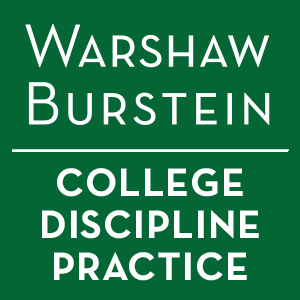-
Doe v. Syracuse University, No. 5:17-cv-00787-TJM-ATB (N.D.N.Y. Apr. 30, 2020)
05/12/2020John Doe was expelled for sexual misconduct stemming from a sexual encounter with Jane Roe in September 2016. After an investigation and hearing, Syracuse University (“Syracuse”) concluded that John sexually assaulted Jane while she was incapacitated due to alcohol consumption, and expelled John. John appealed unsuccessfully and then filed this lawsuit alleging erroneous outcome and selective enforcement under Title IX. Both parties filed motions for summary judgment. The Court granted summary judgment in favor of Syracuse on John’s erroneous outcome claim and denied both parties’ motions regarding the selective enforcement claim.
In support of his selective enforcement claim, John reasoned that he was also drinking the night of the incident, and he was therefore incapacitated under Syracuse’s policy. John argued that when the investigators learned there was evidence he was intoxicated and Jane may have had sex with him while he was unable to consent due to incapacitation, Syracuse was obligated to open an investigation into whether Jane violated the sexual misconduct policy. The Court rejected John’s contention that intoxication was equivalent to incapacitation under Syracuse’s policies, and pointed out that John told the investigators that he was not drunk. Despite these flaws in John’s argument, there was still enough evidence from which a reasonable juror could conclude John was incapacitated. If John was incapacitated and Syracuse ignored this evidence, there could be a finding of gender bias because John and Jane were treated differently despite engaging in similar conduct. For these reasons, the Court denied both motions for summary judgment on the selective enforcement claim.
The Court granted summary judgment to Syracuse on the erroneous outcome claim because John was unable to show gender bias. The Court found that allegations Syracuse did not press Jane about discrepancies between the two parties’ accounts, as well as flaws in the investigator’s credibility assessment and inaccurate information about Jane’s statements in the report before the conduct board were sufficient to cast articulable doubt on the outcome of the proceedings. However, the Court found that public pressure, such as student protests and two OCR investigations, were insufficient to show gender bias motivated the disciplinary decision. John provided no details as to the subject or outcome of the OCR investigations and failed to show that any of the decision-makers were influenced by the student protests. Additionally, the Court noted that the protests were about Title IX resources, not outcomes. Finally, the fact that nearly every sexual misconduct case involved a male respondent did not support a finding of gender bias because Syracuse does not have control over who makes a complaint.
While the selective enforcement claim can proceed to trial, the Court urged the parties to address the McDonnell Douglas standard going forward. At the summary judgment stage, the parties only argued whether discrimination existed because Syracuse punished John but did not punish Jane for similar conduct. The Court wants the parties to address the issue of gender bias using the McDonnell Douglas standard, which requires a showing that plaintiff is (1) a member of a protected class; (2) plaintiff was qualified for employment in the position; (3) plaintiff suffered an adverse employment action; and (4) plaintiff has some minimal evidence suggesting an inference that the employer acted with discriminatory motivation. Once the employer presents evidence of its justification for the adverse action, the presumption of gender bias drops out of the picture, and the McDonnell Douglas framework is no longer relevant. At this point, the plaintiff must demonstrate that the proffered reason was not the true reason, or in any event not the sole reason, for the decision. This means at trial John must prove gender bias was the true reason Syracuse decided to find him responsible and expel him.
Blog
